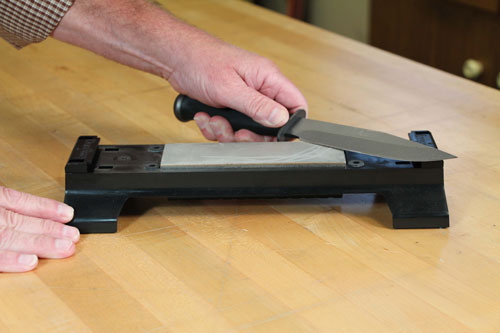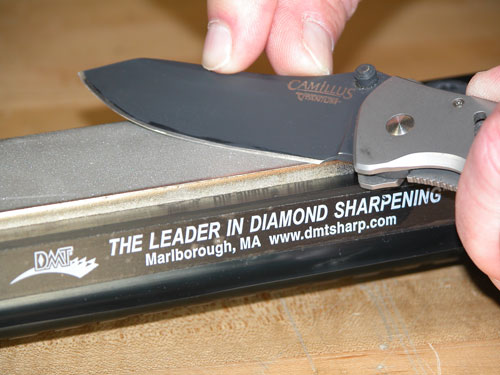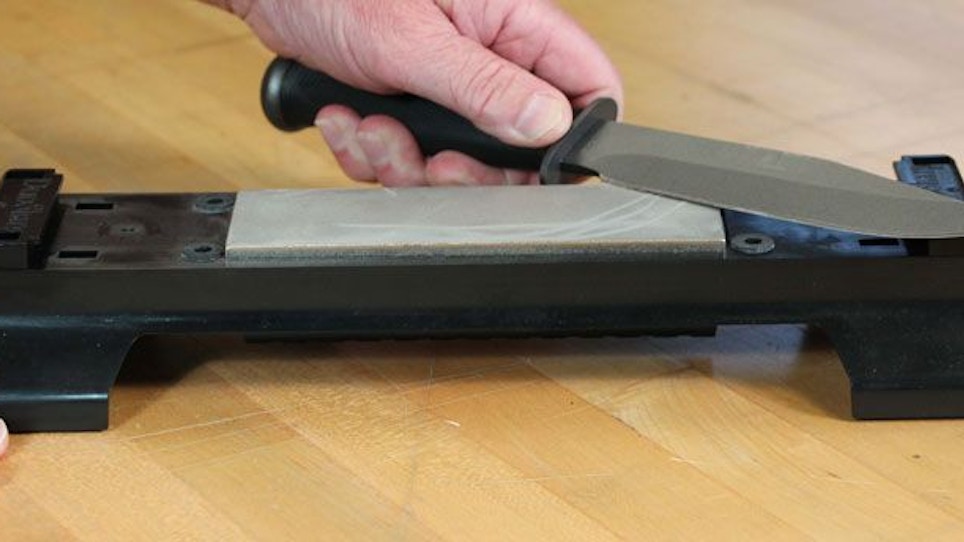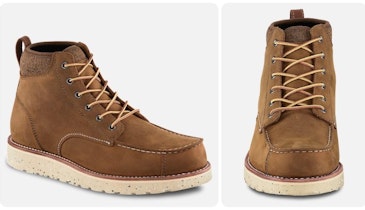 The next time you pull your knife out, ask yourself, “When did I sharpen last?” If you can’t remember, now is probably the right time.
The next time you pull your knife out, ask yourself, “When did I sharpen last?” If you can’t remember, now is probably the right time.
Even the best knife gets dull. The more you cut with a blade, the quicker it will dull. If you want to test your knife’s sharpness, try cutting a sheet of paper. Does the knife tear or get caught in the paper? Does the knife’s cut look ragged and frayed on the edges? If you have any trouble cutting through a sheet of paper, your knife could use some sharpening.
Knife manufacturers engineer a certain “bevel” or angle on a knife based on how it will be used and what it’s designed to cut. For example, chopping knives have heavy blades with less acute angles while skinning and fillet knives, have lighter, thinner blades with more acute angles. When it comes to sharpening, one rule of thumb is: The shallower the angle, the sharper the blade. Also, thinner edges dull faster.
The first step in sharpening is making sure you match the angle of the bevel with the manufacturer’s recommendations. A simple way to do that is to take a magic marker and color the edge of the knife. Then stroke your blade across the diamond sharpener. If your angle is too high, the ink will be removed only at the very tip of the bevel. If your angle is too low, none of the ink will be removed. You want to angle it so you are thinning the ink, but not removing it all. Marking the bevel edge lets you know when you have effectively sharpened the knife so you avoid over-sharpening which can reduce your blade’s life.
 Once you have the correct angle, take your blade and stroke it over a diamond sharpener (www.dmtsharp.com) six to eight times on each side of the bevel. It is important that both sides of the knife are sharpened equally. It’s best to focus on one side at a time because alternating from side to side makes it harder to maintain the correct angle. Sharpening with diamond stones is quick—approximately 10 times faster than conventional abrasives—so there’s no reason to rush your strokes. Be patient and handle your blades and edges carefully.
Once you have the correct angle, take your blade and stroke it over a diamond sharpener (www.dmtsharp.com) six to eight times on each side of the bevel. It is important that both sides of the knife are sharpened equally. It’s best to focus on one side at a time because alternating from side to side makes it harder to maintain the correct angle. Sharpening with diamond stones is quick—approximately 10 times faster than conventional abrasives—so there’s no reason to rush your strokes. Be patient and handle your blades and edges carefully.
It’s always easier to keep a knife sharp than it is to rescue a dull blade. But, if you’ve got a knife that’s in desperate shape, don’t despair. You can bring it back to life by sharpening in stages, using multiple grits. There are three basic types of knife sharpening grits: coarse, fine and extra fine. If your knife is extremely dull, start with a coarse grit and then move on to a finer grit. If a knife just needs a bit of sharpening, the finer grits will be more effective. As you get to the finer grit, lighten your stroke in order to achieve a more refined edge. If you’re using multiple grits to rescue a blade, you still only need six to eight strokes on each side of the blade. Remember, removing extra materials from your knife will affect the longevity of the blade.
If you’re like most outdoorsmen, your knives are cherished tools. Chances are you spent a pretty penny buying them, too. If you neglect their maintenance, you’ll not only be wasting your money; you’ll never get the true enjoyment of consistently working with a blade that’s geared to perform under any circumstance.
About the author: Stan Watson is the technical director for Diamond Machining Technology, manufacturer of a full line of Made in the USA diamond sharpening tools for use in woodworking, camping, fishing, hunting, outdoor and winter sports, culinary arts, gardening, police/security and industrial applications. He is the holder of 11 engineering patents in the sharpening industry. He can be reached at swatson@dmtsharp.com.






